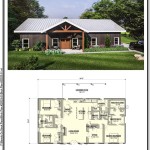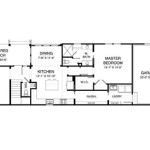Lay Out House Floor Plans
Creating a floor plan for your home is an essential step in the design process. A well-designed floor plan can maximize space, improve flow, and create a more comfortable and functional living environment. Here are some tips for laying out house floor plans:
Consider Your Lifestyle and Needs
Start by considering your lifestyle and needs. How many people will live in the home? What are your daily routines? What activities do you enjoy? These factors will influence the size and layout of your home.
Establish Functional Zones
Divide your home into functional zones, such as the living area, dining area, kitchen, and bedrooms. Position these zones strategically to create a natural flow and minimize cross-traffic.
Maximize Natural Light
Place windows and doors to allow for ample natural light. This can reduce energy costs and create a more inviting atmosphere. Consider the orientation of the house to take advantage of sunlight throughout the day.
Create a Focal Point
Every room should have a focal point, such as a fireplace, large window, or artwork. This element draws the eye and creates a sense of unity.
Minimize Hallways and Passages
Hallways and passages can take up valuable space. Minimize their size by using open floor plans or incorporating alcoves and nooks for storage and seating.
Pay Attention to Flow and Circulation
The flow of traffic through the home should be natural and effortless. Avoid creating dead-end spaces or narrow passages. Ensure that there is ample space for furniture and movement.
Incorporate Storage Solutions
Plan for ample storage throughout the home. Consider built-in cabinets, closets, and drawers to keep belongings organized and out of sight.
Consider Outdoor Living Spaces
If possible, incorporate outdoor living spaces into your floor plan. These areas can extend the living space and provide a connection to nature.
Seek Professional Help
If you are not confident in your ability to design a floor plan, consider hiring an architect or interior designer. They can help you create a plan that meets your specific needs and preferences.
Other Tips
* Use graph paper or design software to create a scale drawing of your floor plan. * Consider the location of utilities, such as plumbing and electrical lines. * Measure the dimensions of your furniture and appliances to ensure they fit properly. * Take into account the need for future expansion or remodeling. * Don't be afraid to experiment with different layouts until you find one that suits you.
Create Professional 2d And 3d Floor Plans

Design Your Own House Floor Plans Roomsketcher

Small House Designs Shd 2024001 Pinoy Eplans

Design Your Own House Floor Plans Roomsketcher

Heritage House Plan

How To Draw A Floor Plan Live Home 3d

William House Plan Sater Design Collection

22 House Design With Floor Plans You Will Love Simple 9a3

Importance Of House Floor Plans In Architectural Design

How To Read Floor Plans 8 Key Elements A Plan Foyr








